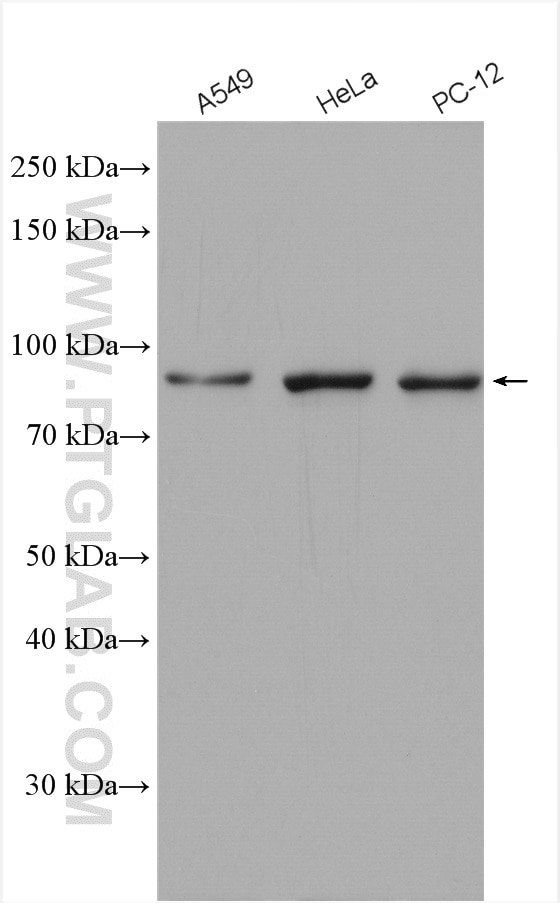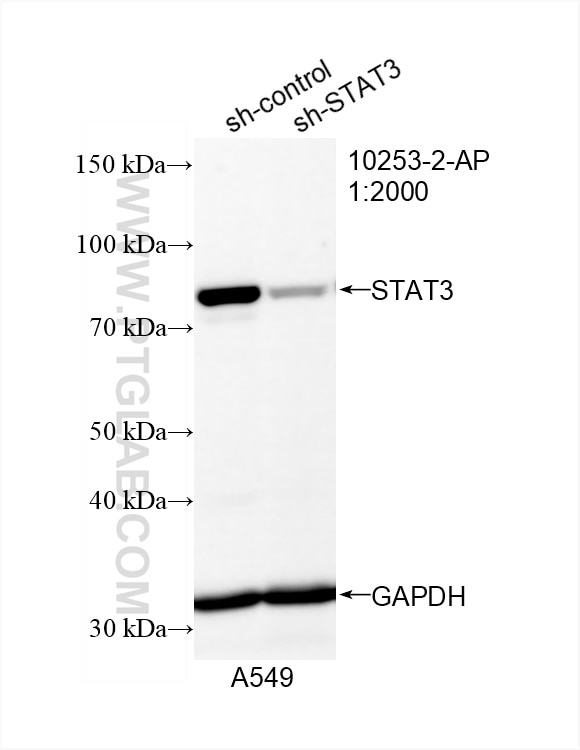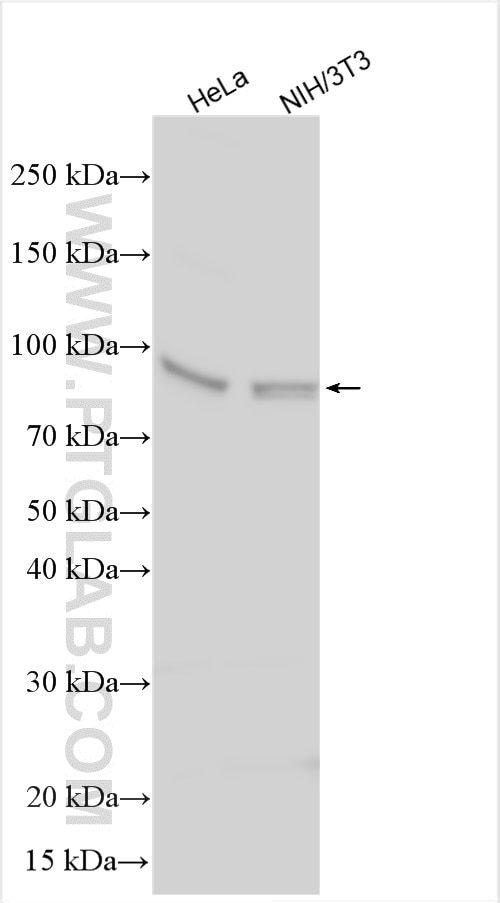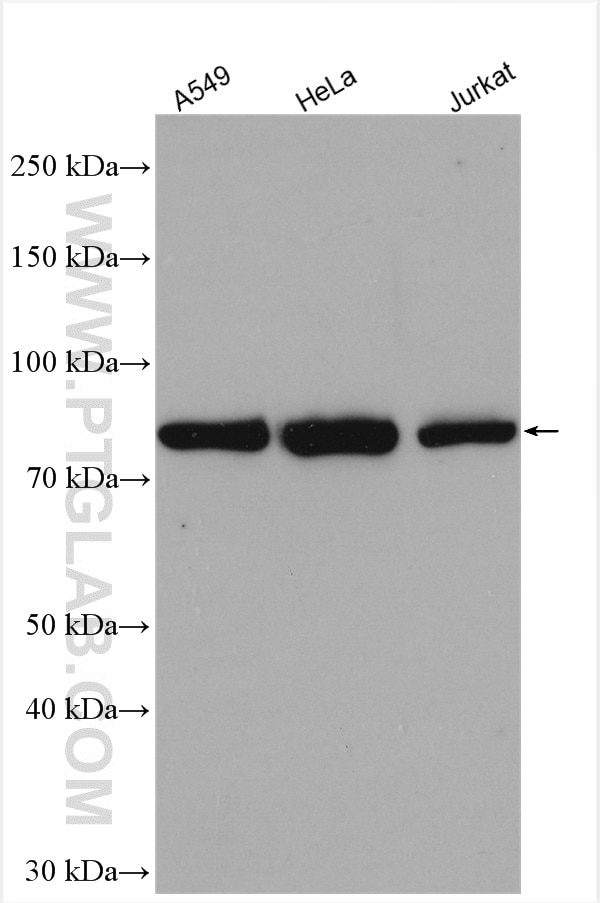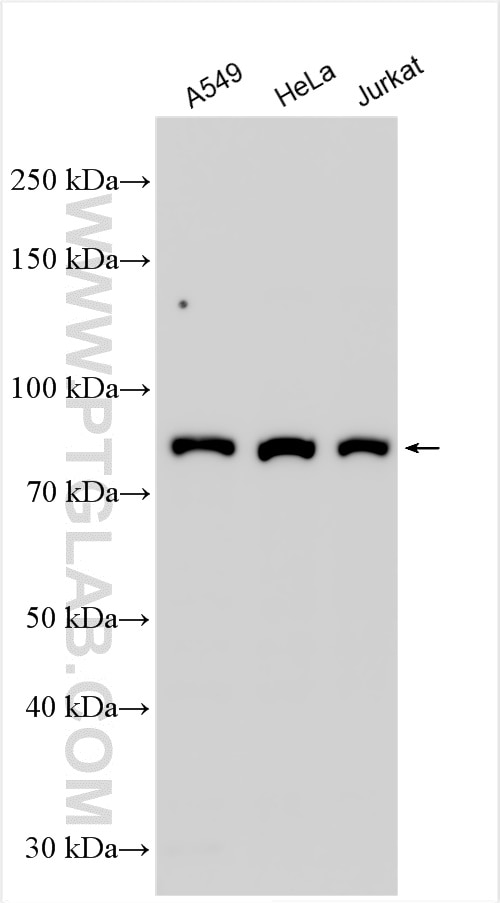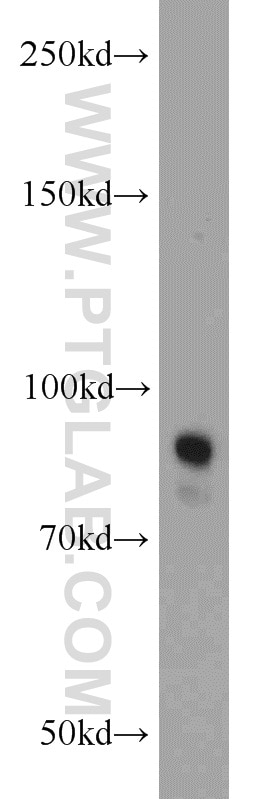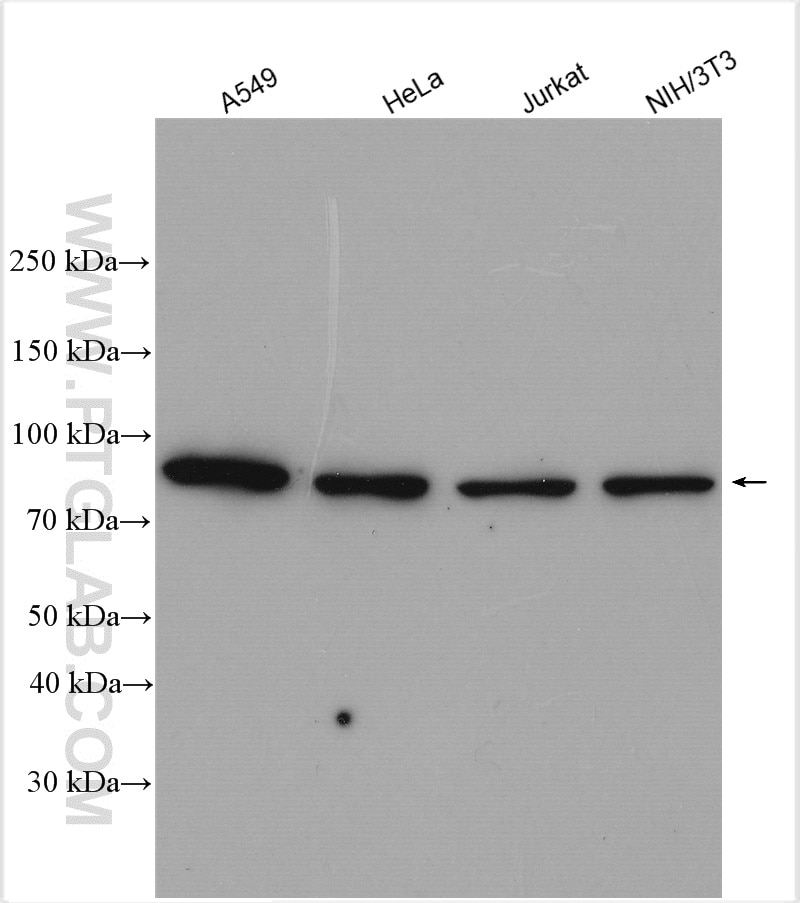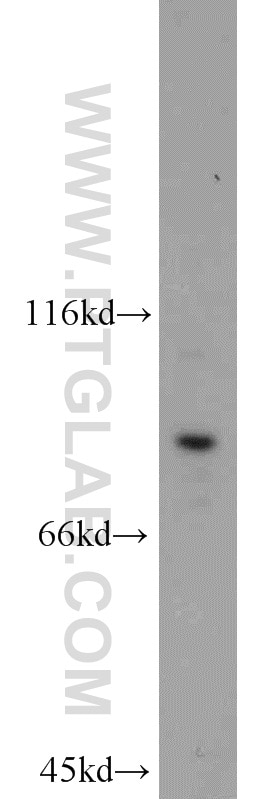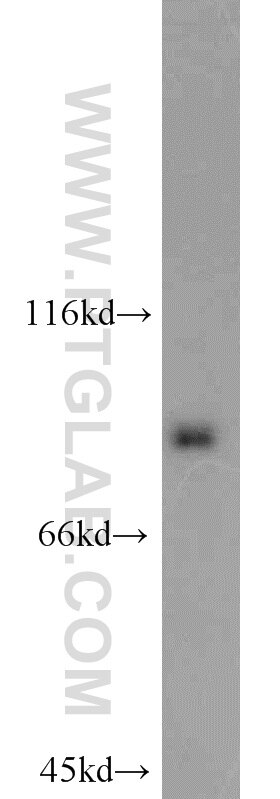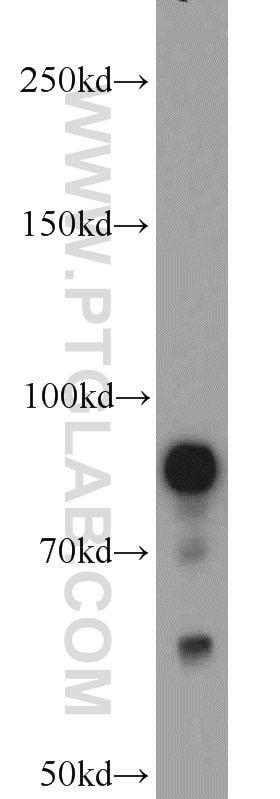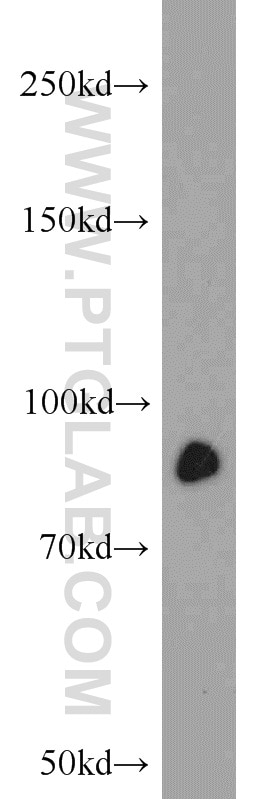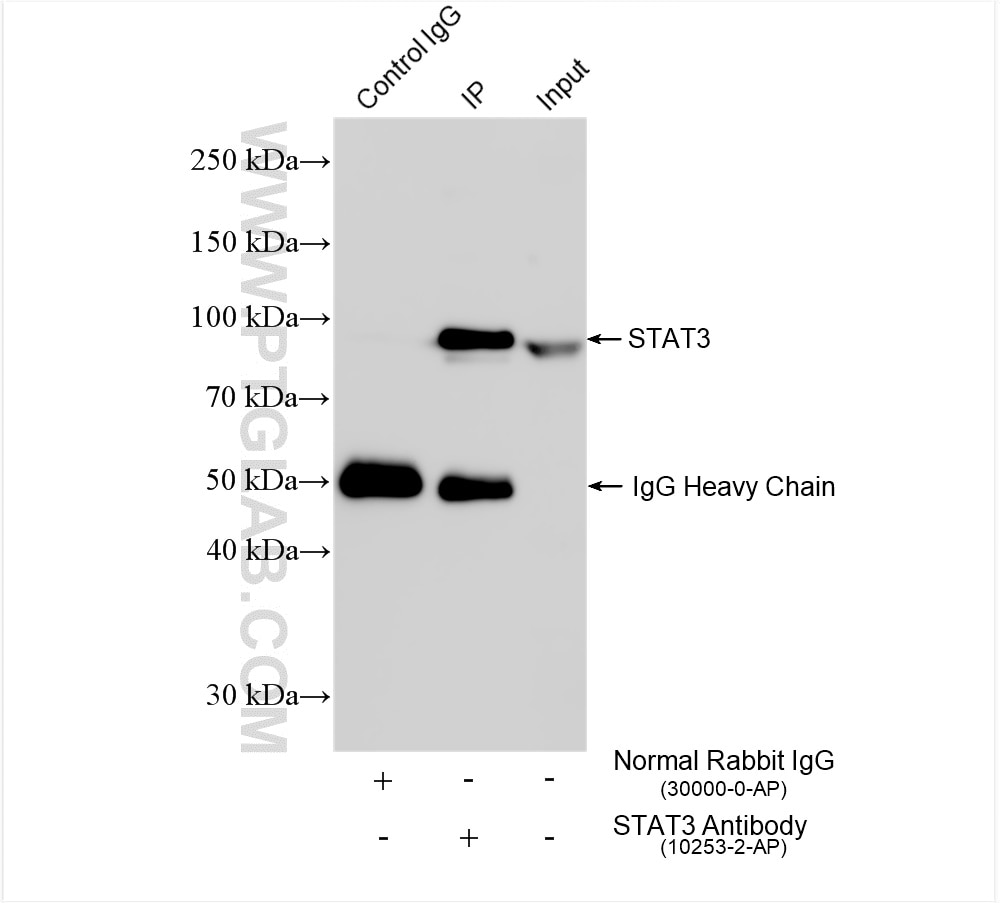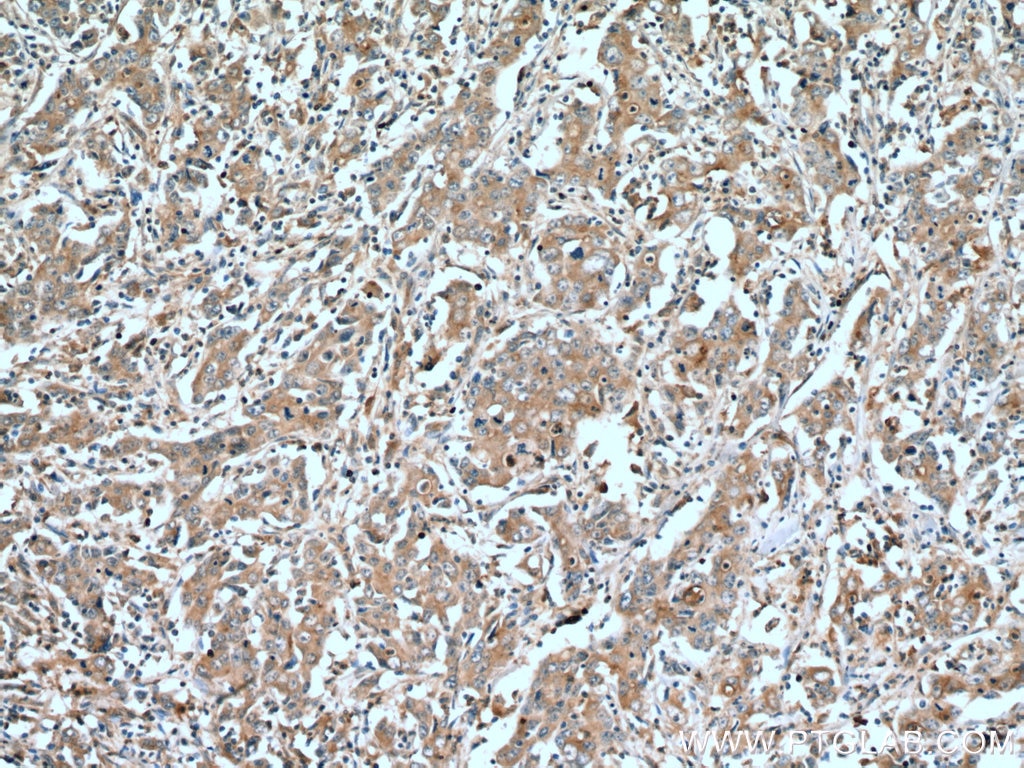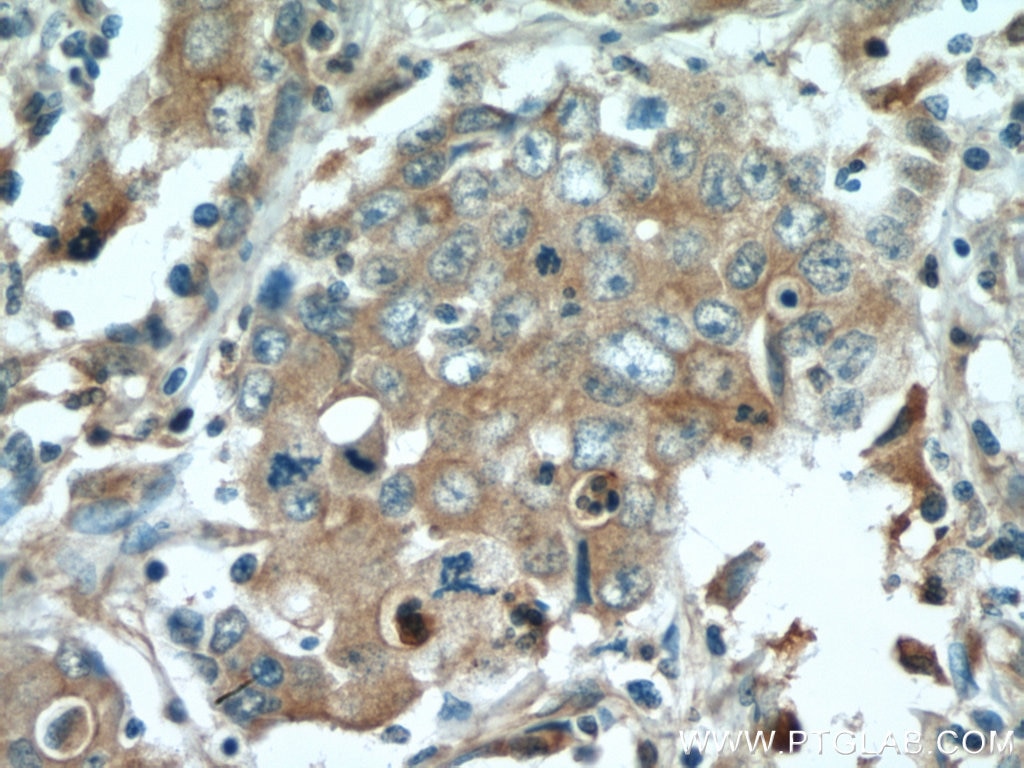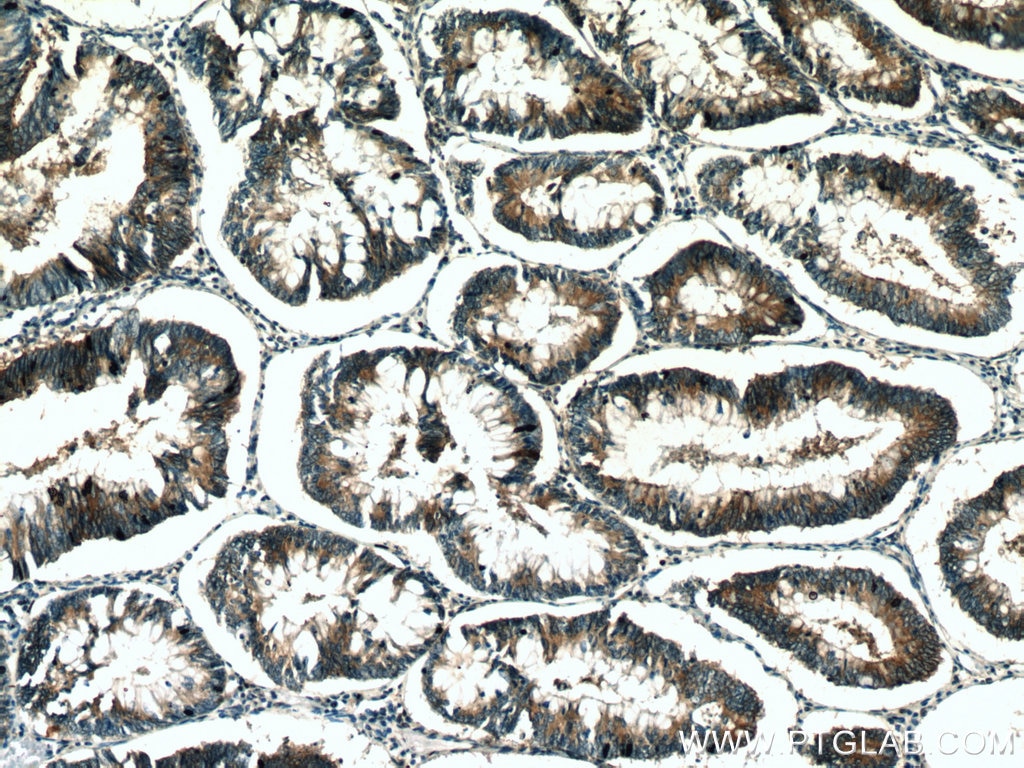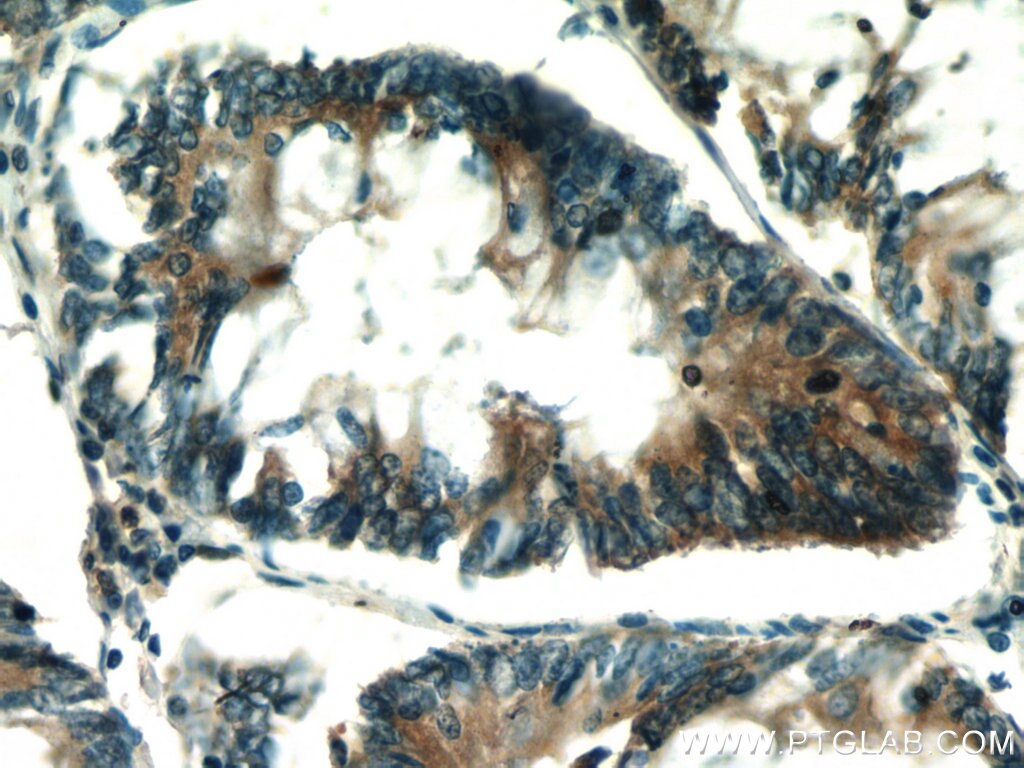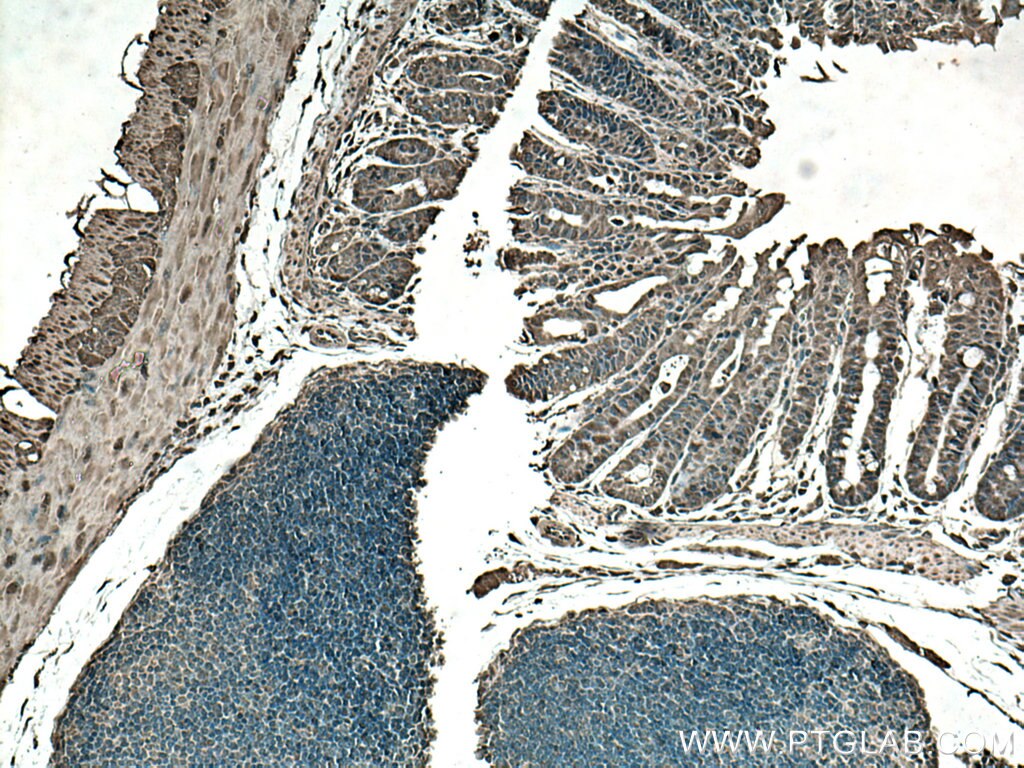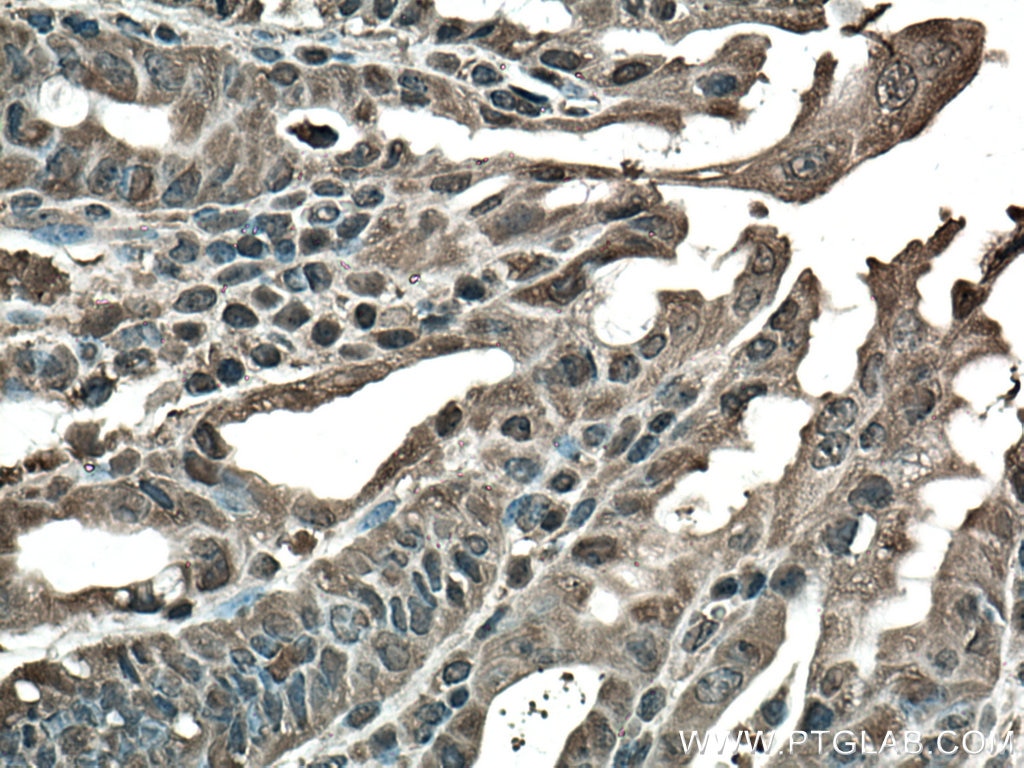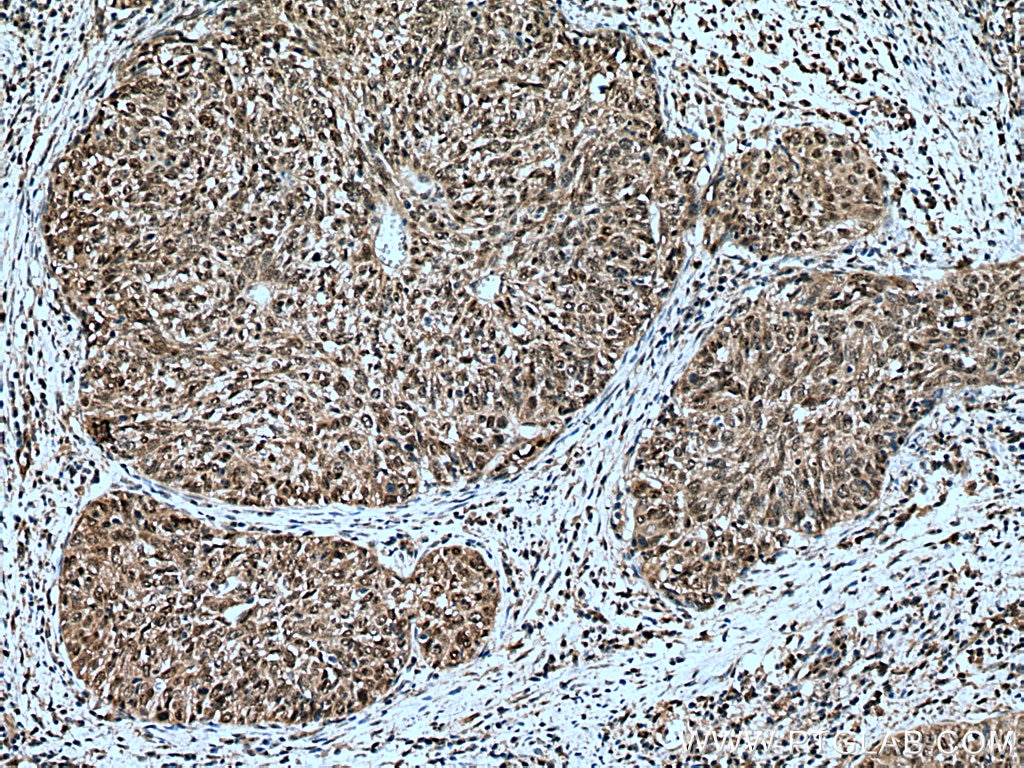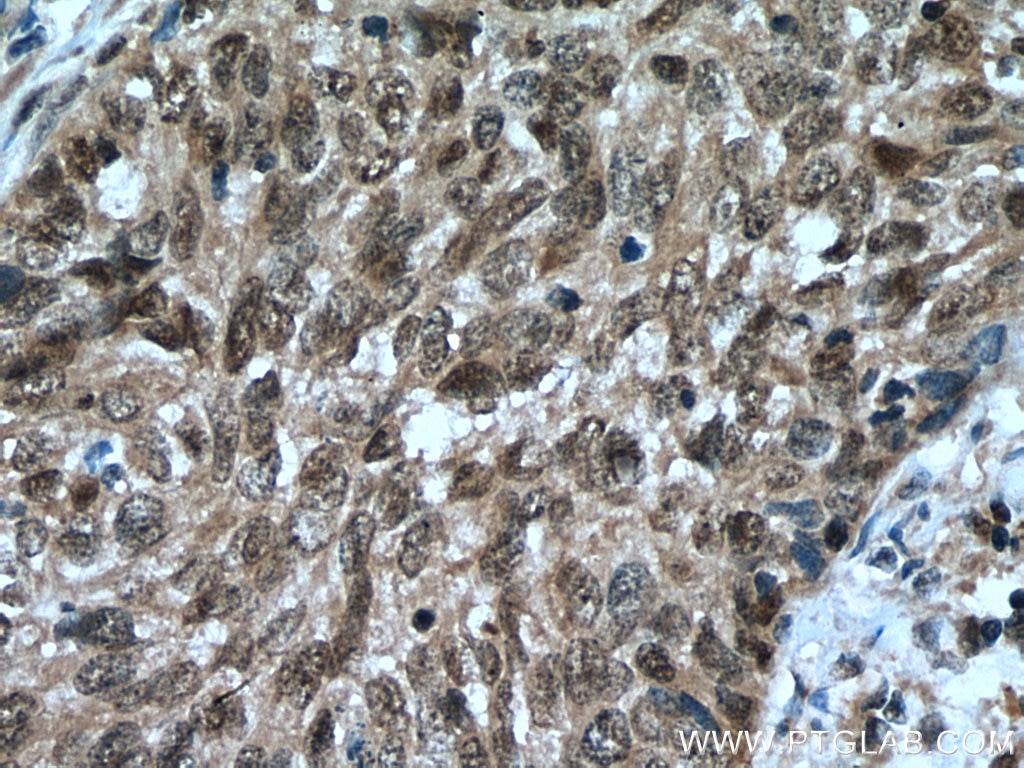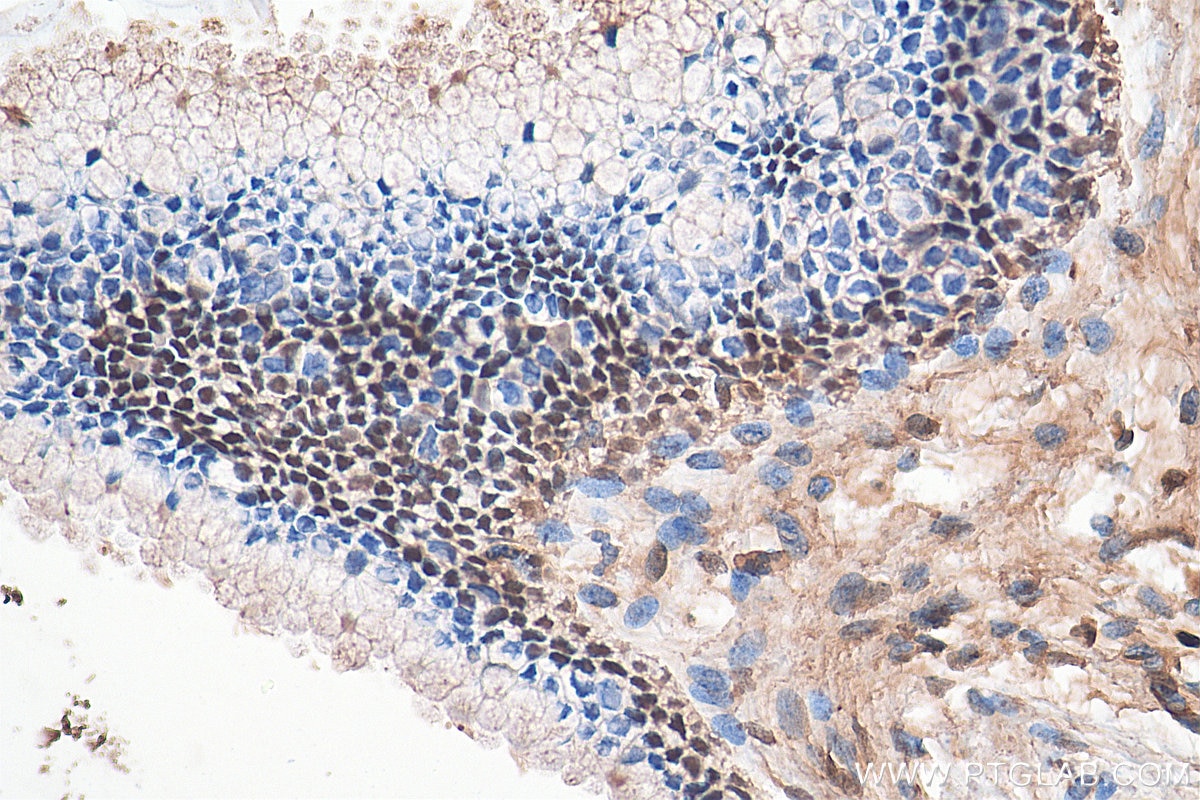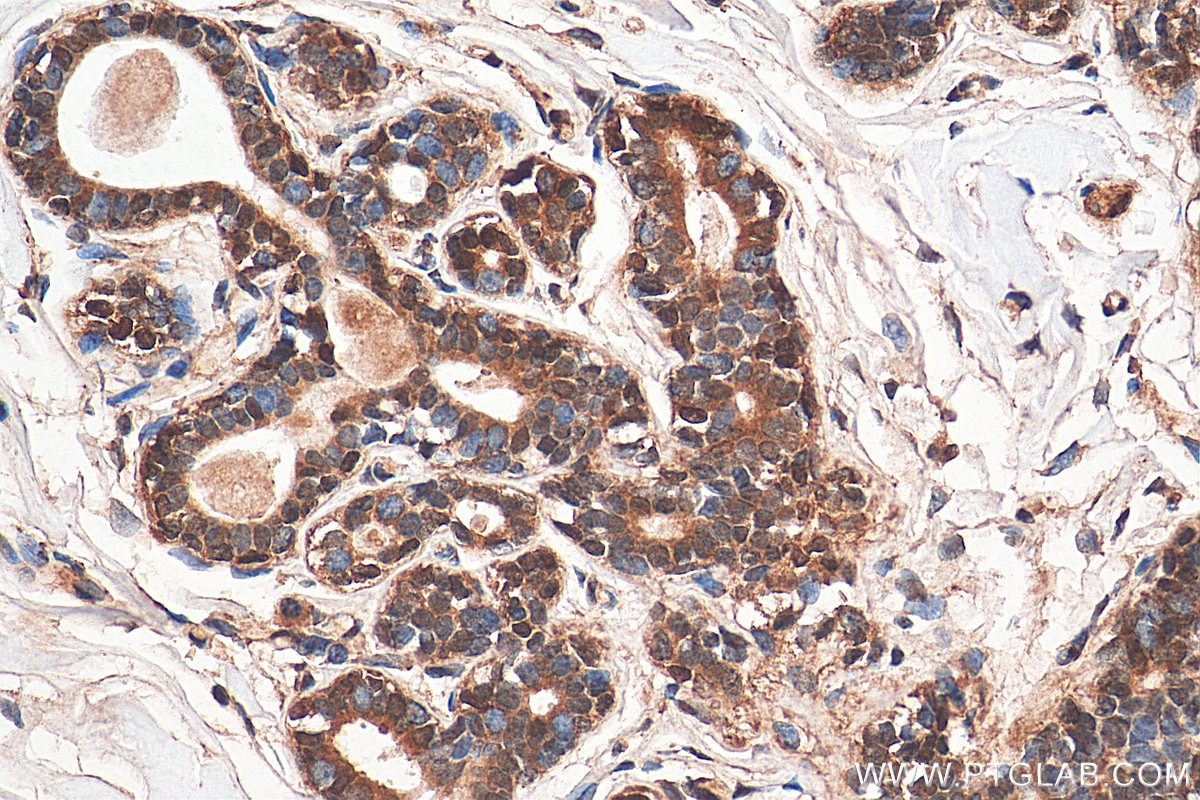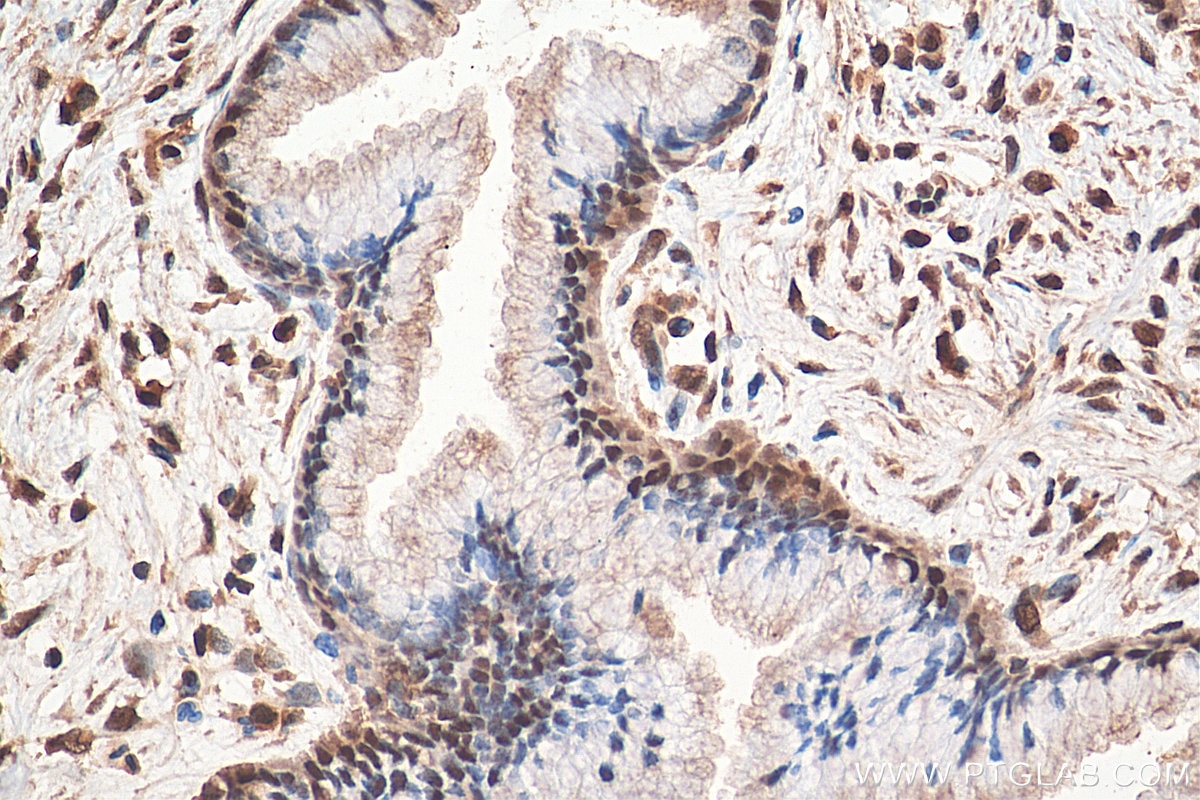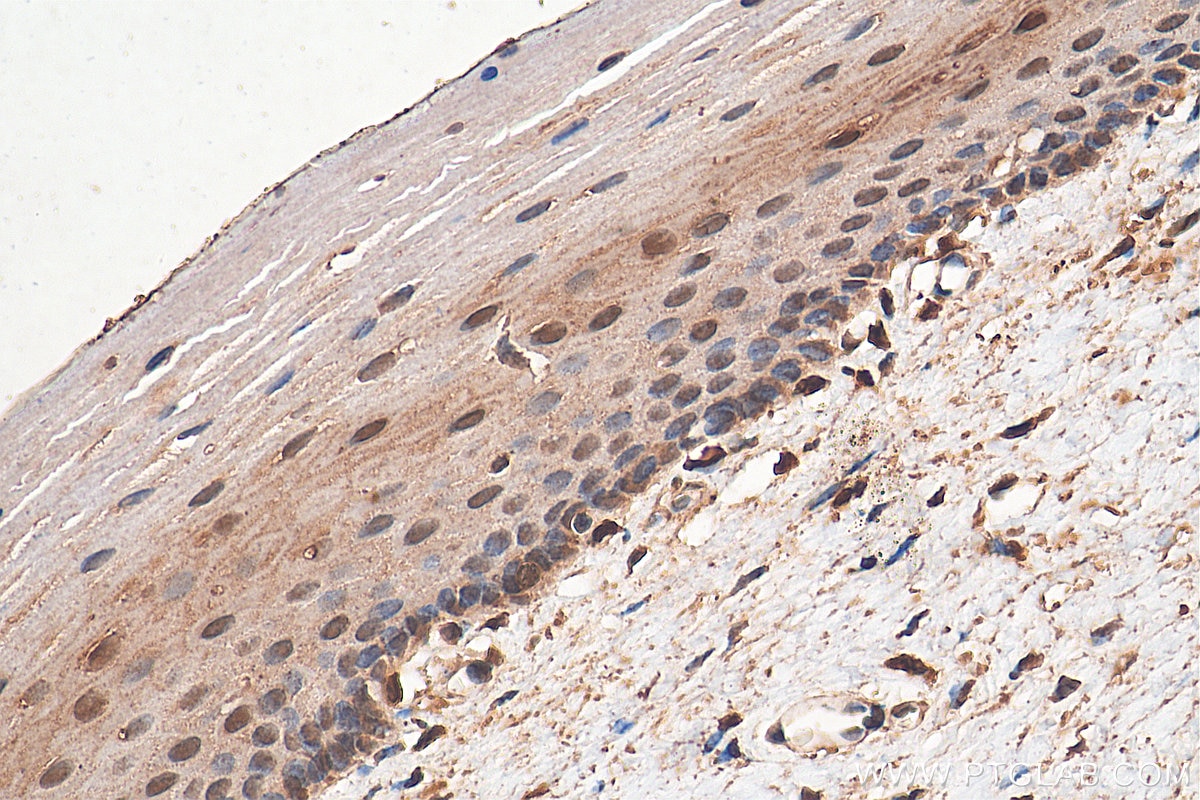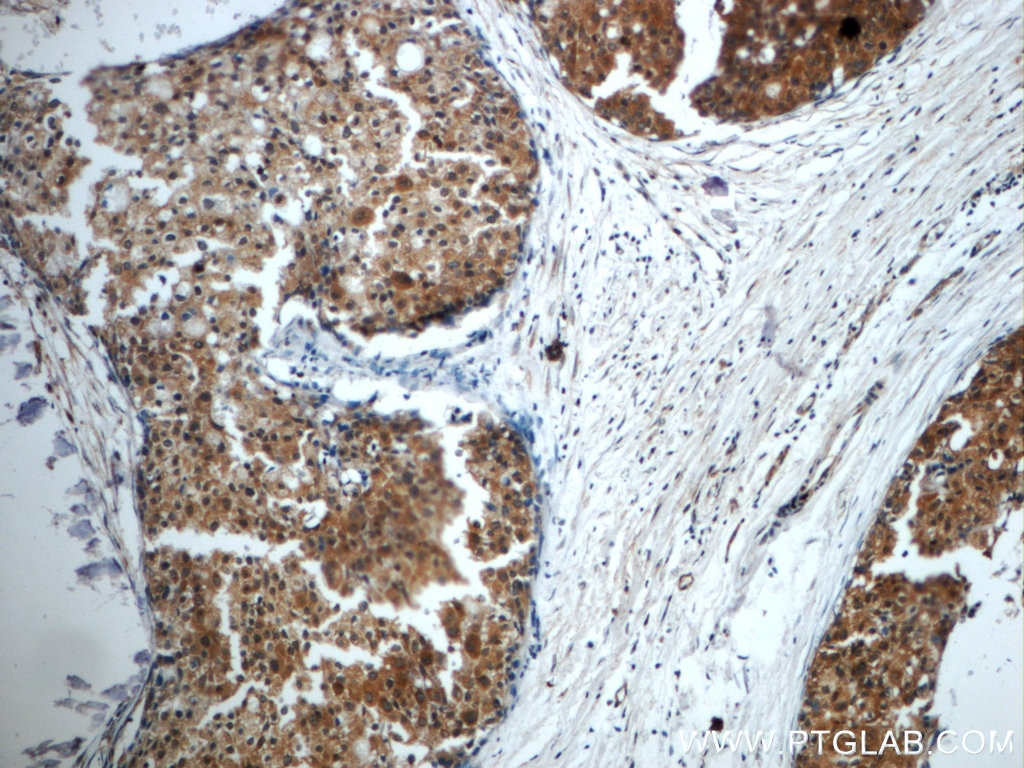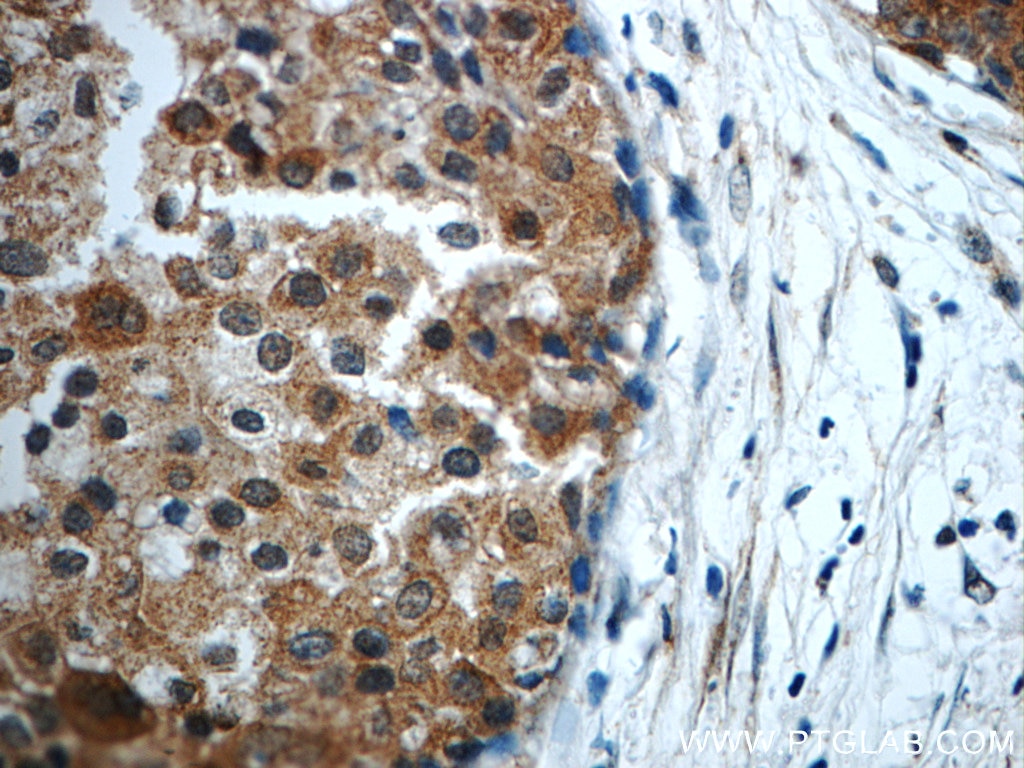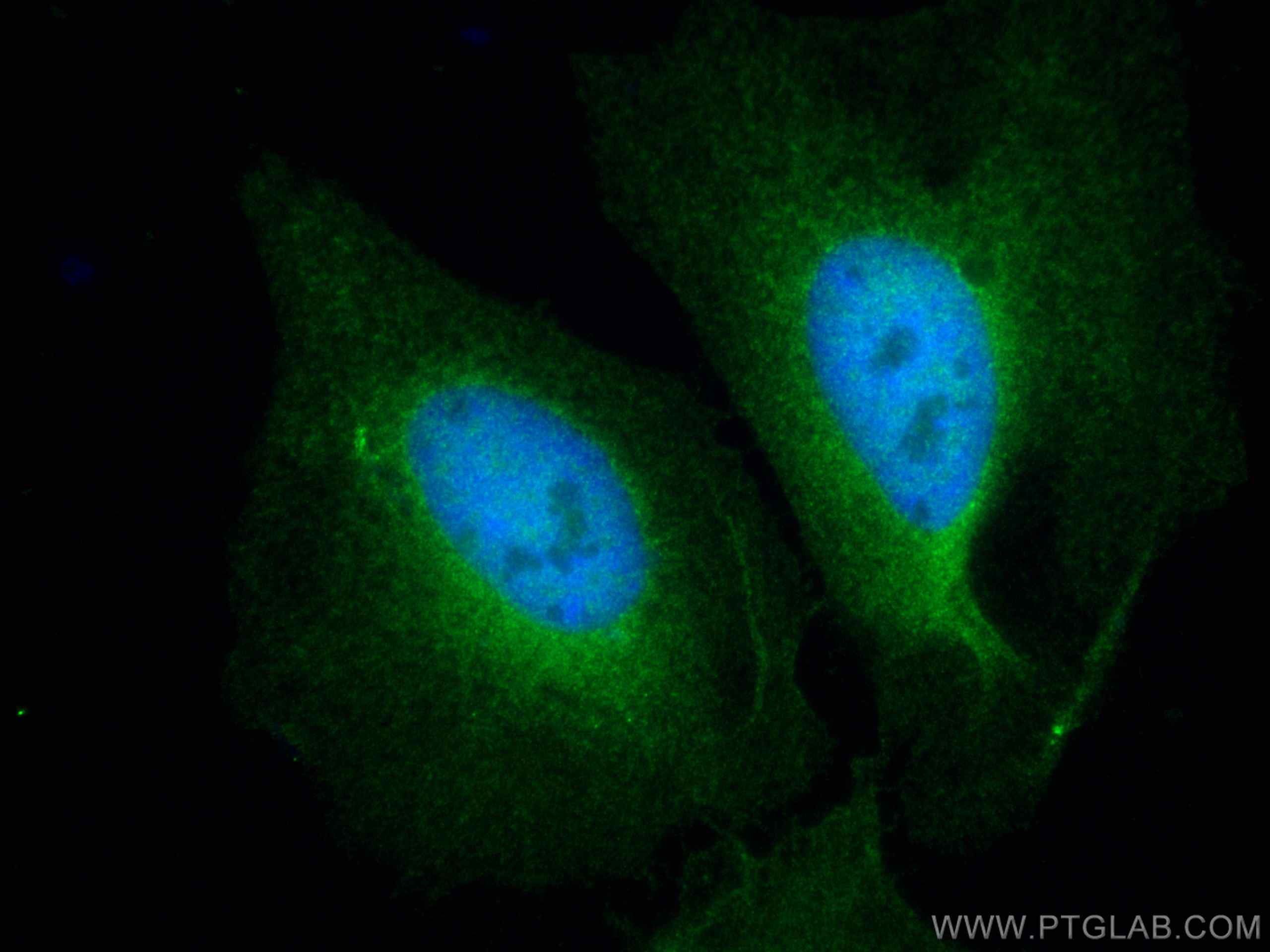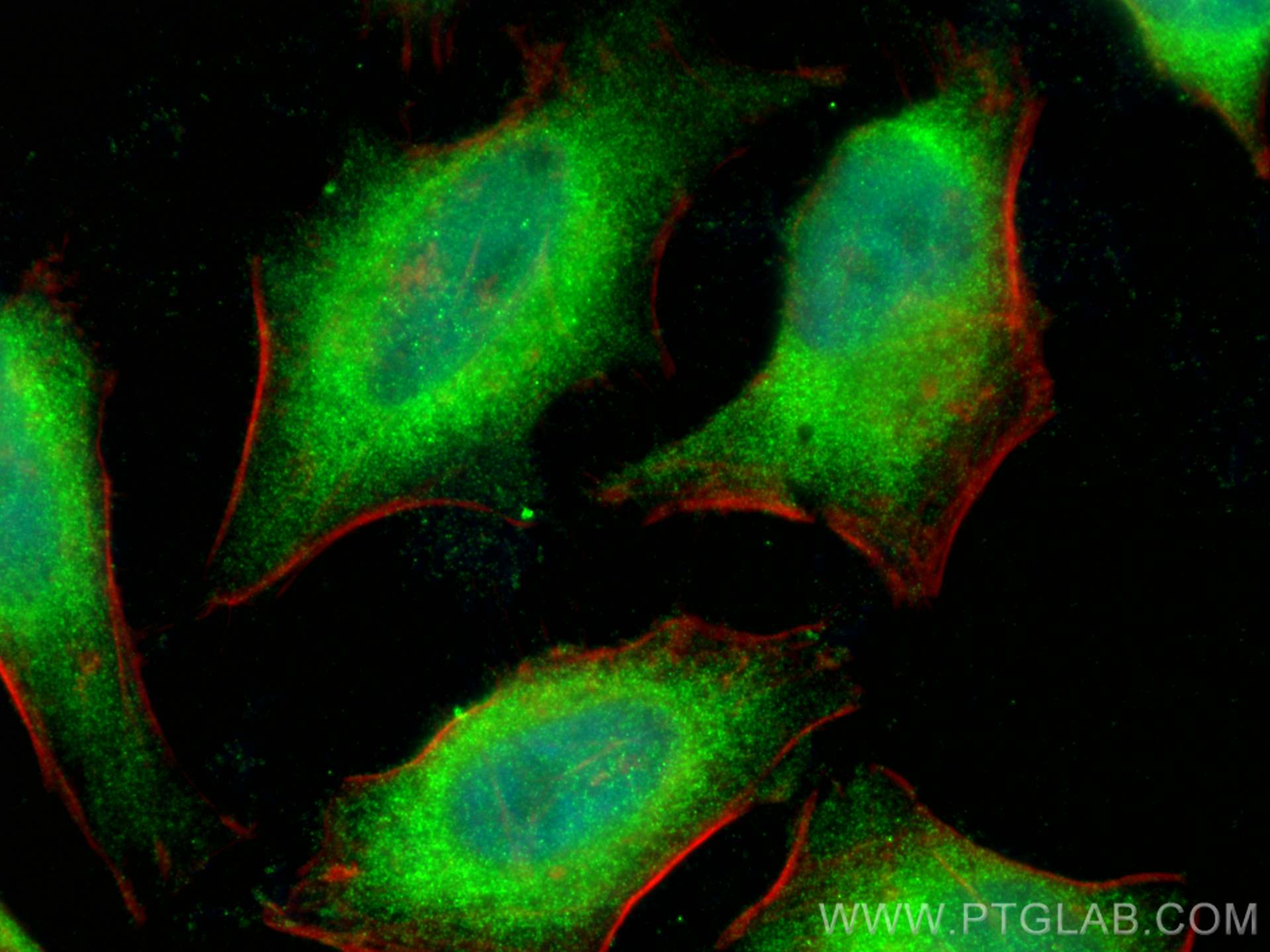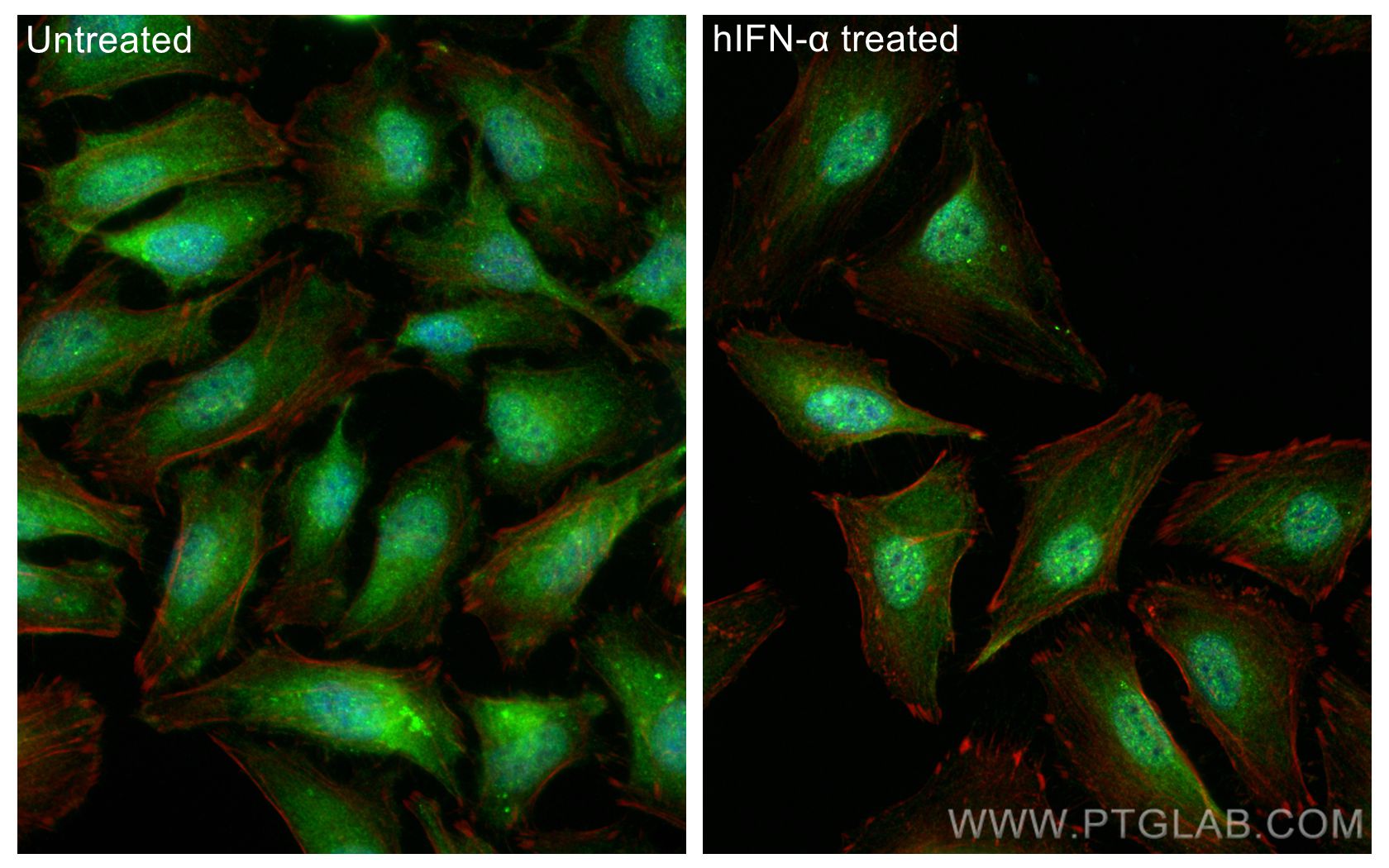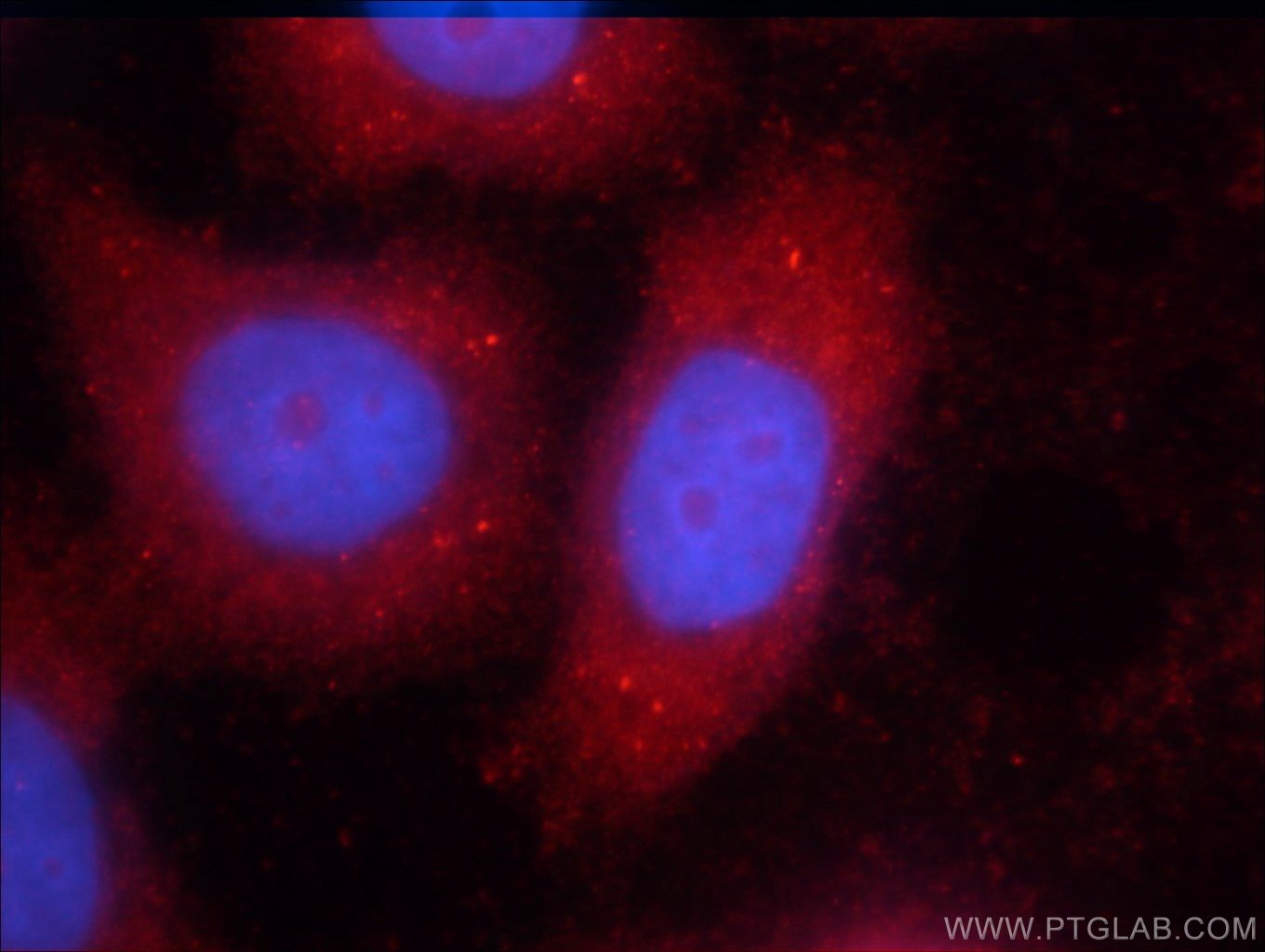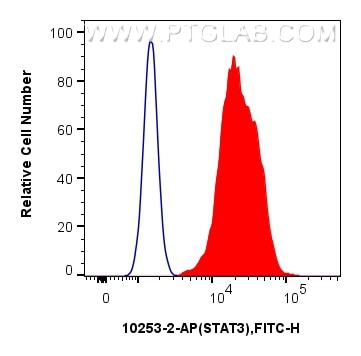- Phare
- Validé par KD/KO
Anticorps Polyclonal de lapin anti-STAT3
STAT3 Polyclonal Antibody for WB, IHC, IF/ICC, FC (Intra), IP, ELISA
Hôte / Isotype
Lapin / IgG
Réactivité testée
Humain, rat, souris et plus (3)
Applications
WB, IHC, IF/ICC, FC (Intra), IP, CoIP, ChIP, RIP, ELISA
Conjugaison
Non conjugué
N° de cat : 10253-2-AP
Synonymes
Galerie de données de validation
Applications testées
| Résultats positifs en WB | cellules A549, cellules A431, cellules HeLa, cellules Jurkat, cellules K-562, cellules MCF-7, cellules NIH/3T3, cellules PC-12 |
| Résultats positifs en IP | cellules HeLa, |
| Résultats positifs en IHC | tissu de cancer de l'estomac humain, tissu de cancer du col de l'utérus humain, tissu de cancer du côlon humain, tissu de cancer du sein humain, tissu de côlon de souris il est suggéré de démasquer l'antigène avec un tampon de TE buffer pH 9.0; (*) À défaut, 'le démasquage de l'antigène peut être 'effectué avec un tampon citrate pH 6,0. |
| Résultats positifs en IF/ICC | cellules HeLa, IFN alpha treated HeLa cells |
| Résultats positifs en FC (Intra) | cellules Ramos, |
Dilution recommandée
| Application | Dilution |
|---|---|
| Western Blot (WB) | WB : 1:2000-1:16000 |
| Immunoprécipitation (IP) | IP : 0.5-4.0 ug for 1.0-3.0 mg of total protein lysate |
| Immunohistochimie (IHC) | IHC : 1:50-1:500 |
| Immunofluorescence (IF)/ICC | IF/ICC : 1:50-1:500 |
| Flow Cytometry (FC) (INTRA) | FC (INTRA) : 0.40 ug per 10^6 cells in a 100 µl suspension |
| It is recommended that this reagent should be titrated in each testing system to obtain optimal results. | |
| Sample-dependent, check data in validation data gallery | |
Informations sur le produit
10253-2-AP cible STAT3 dans les applications de WB, IHC, IF/ICC, FC (Intra), IP, CoIP, ChIP, RIP, ELISA et montre une réactivité avec des échantillons Humain, rat, souris
| Réactivité | Humain, rat, souris |
| Réactivité citée | rat, bovin, Humain, poisson-zèbre, porc, souris |
| Hôte / Isotype | Lapin / IgG |
| Clonalité | Polyclonal |
| Type | Anticorps |
| Immunogène | STAT3 Protéine recombinante Ag0360 |
| Nom complet | signal transducer and activator of transcription 3 (acute-phase response factor) |
| Masse moléculaire calculée | 770 aa, 88 kDa |
| Poids moléculaire observé | 88 kDa |
| Numéro d’acquisition GenBank | BC000627 |
| Symbole du gène | STAT3 |
| Identification du gène (NCBI) | 6774 |
| Conjugaison | Non conjugué |
| Forme | Liquide |
| Méthode de purification | Purification par affinité contre l'antigène |
| Tampon de stockage | PBS with 0.02% sodium azide and 50% glycerol |
| Conditions de stockage | Stocker à -20°C. Stable pendant un an après l'expédition. L'aliquotage n'est pas nécessaire pour le stockage à -20oC Les 20ul contiennent 0,1% de BSA. |
Informations générales
Signal transducer and activator of transcription 3 (acute-phase response factor) (STAT3, synonyms: APRF, FLJ20882, MGC16063) is a member of the STAT protein family. In response to cytokines and growth factors, STAT family members are phosphorylated by the receptor associated kinases, and then form homo- or heterodimers that translocate to the cell nucleus where they act as transcription activators. STAT3 is activated through phosphorylation in response to various cytokines and growth factors including IFNs, EGF, IL5, IL6, HGF, LIF and BMP2. STAT3 mediates the expression of a variety of genes in response to cell stimuli, and thus plays a key role in many cellular processes such as cell growth and apoptosis. The small GTPase Rac1 has been shown to bind and regulate the activity of STAT3. This antibody is a rabbit polyclonal antibody raised against residues near the N terminus of human STAT3. STAT3 exists three isoforms and the molecular weight of each isoform respectively is 83 kDa, 87 kDa and 88 kDa.
Protocole
| Product Specific Protocols | |
|---|---|
| WB protocol for STAT3 antibody 10253-2-AP | Download protocol |
| IHC protocol for STAT3 antibody 10253-2-AP | Download protocol |
| IF protocol for STAT3 antibody 10253-2-AP | Download protocol |
| IP protocol for STAT3 antibody 10253-2-AP | Download protocol |
| Standard Protocols | |
|---|---|
| Click here to view our Standard Protocols |
Publications
| Species | Application | Title |
|---|---|---|
Cancer Cell Targeting the immune privilege of tumor-initiating cells to enhance cancer immunotherapy | ||
Brain Behav Immun l-Cysteine suppresses hypoxia-ischemia injury in neonatal mice by reducing glial activation, promoting autophagic flux and mediating synaptic modification via H2S formation. | ||
EMBO Mol Med Targeting HPK1 inhibits neutrophil responses to mitigate post-stroke lung and cerebral injuries |
Avis
The reviews below have been submitted by verified Proteintech customers who received an incentive for providing their feedback.
FH Iram (Verified Customer) (09-18-2025) | Bands are very clear band.
|
FH Daniele (Verified Customer) (04-29-2022) | It works very well for WB, IF and IP
|
FH Yuan (Verified Customer) (01-23-2020) | Very good Stat3 antibody for western blot. Strong signal at 1:5000 dilution. Highly recommend.
|
FH Daniele (Verified Customer) (11-25-2019) | It works very well both in western blot and in immunoprecipitation.
|
